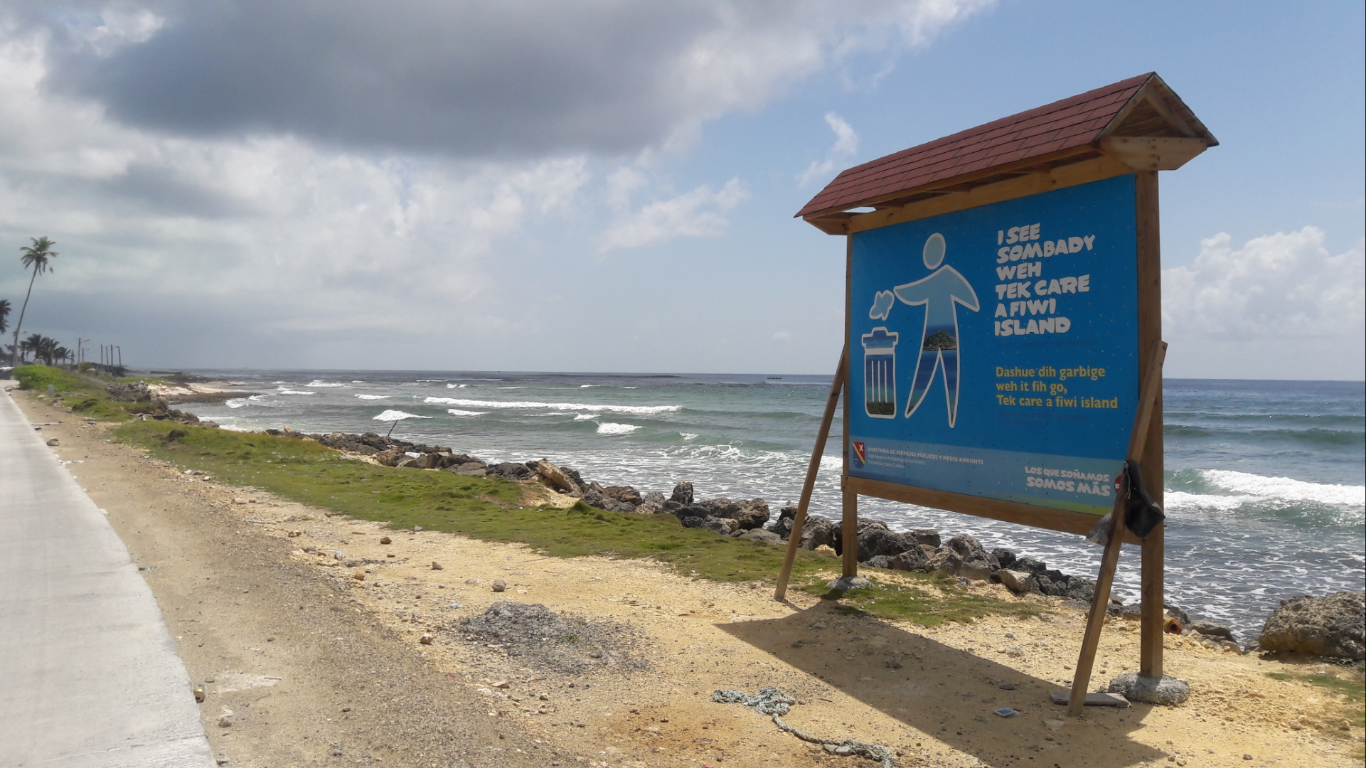@radiobrendan
Being brutally honest, of the few remaining Colombian departments we’ve yet to visit, San Andrés rated as the least important.
OK, there are worse things you could do than chill out on a small tropical island in the Caribbean, but we’ve been there before in the shape of Barbados, as well as being well-acquainted with Colombia’s Atlantic coast. Seen one Caribbean hotspot, seen them all, right?
What’s more, from speaking to others who visited San Andrés, the common refrain has been ‘sure it’s nice, but it’s somewhat overcrowded and dirty’. (Throw in a relatively steep tourist tax to be paid before visiting and its appeal weakens further.) It’s also widely agreed that the ‘neighbouring’ sister island of Providencia (the same department albeit) is the better option, with San Andrés just used as a necessary stopover to get there.
Yet when opportunity knocks in these straightened times, it would be foolish to turn it away. Thus, with a subsidised flight and a few free nights board on the table (it’s a tough life at times), the decision to check out San Andrés was a no-brainer.
For sure, and lamentably in a not-too-untypical Colombian fashion, it’s certainly not pristine clean. You don’t have to look hard at all to find plastic bottles and drinks cans scattered around, normally within metres of a rubbish bin. Interestingly enough, those with the strongest links to the island, the Raizals who speak Creole and seem to prefer using English than Spanish when given the choice, blame this spoiling of the land on the Colombian continentals who have made the place their home in big numbers over the last number of decades.
Indeed, the Creole types ill-feeling towards their ‘administrators’ seems to run much deeper than just the environmental pollution. Let’s just say there appears little love lost between Raizals with deep roots to the place and some more recent arrivals; a feeling that the former are being systematically drowned out by the latter (something we’ll leave for discussion in another post).
That, what some may view as colonialism aside, one of the most visually spectacular features is the clear and colourful majestic waters, home to corals bursting with marine life — snorkelling and/or diving are highly recommended on this front. Thankfully these appear to be well-maintained and long may it continue.
As regards where to stay, the more popular side of the island is the commercial centre in the north, around the airport and its environs. Here you have the big hotel names and a host of other accommodation options, as well as picture-perfect, golden-sand beaches. It has that recognisable holiday island vibe to it, nothing terribly original in that.
Further south down the east side of the island, around the San Luis area, there are more beaches, ones that tend to be less frequented.
Most visitors rent their own transport to explore the island. Scooters are a good way to go for individuals or couples, with big quad-type vehicles, or mules as they’re called, a handy option for three or more people.
The tried and trusted push bike for about 30,000 COP (10 euros) per day is another alternative, if you can stick the heat that is (if an Irishman can do it and survive, it’s doable for most who are in any way active; the total area is just 26 square kilometres with the highest point standing at 84 metres).
A spin up Orange Hill to the landmark First Baptist Church allows for nice views of both the east and west sides of the island, and it also gives a flair to San Andrés’ former British colonial past (note the church service board written in English).
In terms of expenses, standard accommodation and meals are costlier than what you’ll find on the Colombian mainland, understandable for a rather remote, tourism-focused Caribbean island. On the flip side, beers and other alcohol products retail at prices similar to those in Bogotá’s cheaper barrios.
The rubbish black spots aside — a pan-Colombian problem that — our four-night visit to San Andrés certainly didn’t disappoint. Whether it’s seen as a poor man’s Providencia or not, it still has plenty to offer in its own right.
* Two recommended accommodation options on the west side are Siloé Cove Hospedaje Boutique and Royal Palm Inn (+57 3164957522). The Caleño-owned and administered Siloé offers bikes and a scooter to rent for guests, as well as snorkelling equipment (snorkelling can be done with the administrators, who do it on a daily basis.)
Royal Palm Inn is family-ran by a very friendly local couple and provides an airport pick-up and drop-off service. The owner also drops off and picks up guests wishing to go to the commercial centre.
Viva Colombia operates two daily return flights to San Andrés from Bogotá. The outbound flights depart El Dorado at 09.20 and 19.50. The return flights leave at 12.10 and 22.40. Visit vivacolombia.co for all Viva Colombia’s latest routes and prices.
_______________________________________________
Facebook: Wrong Way Corrigan – The Blog & IQuiz «The Bogotá Pub Quiz».



